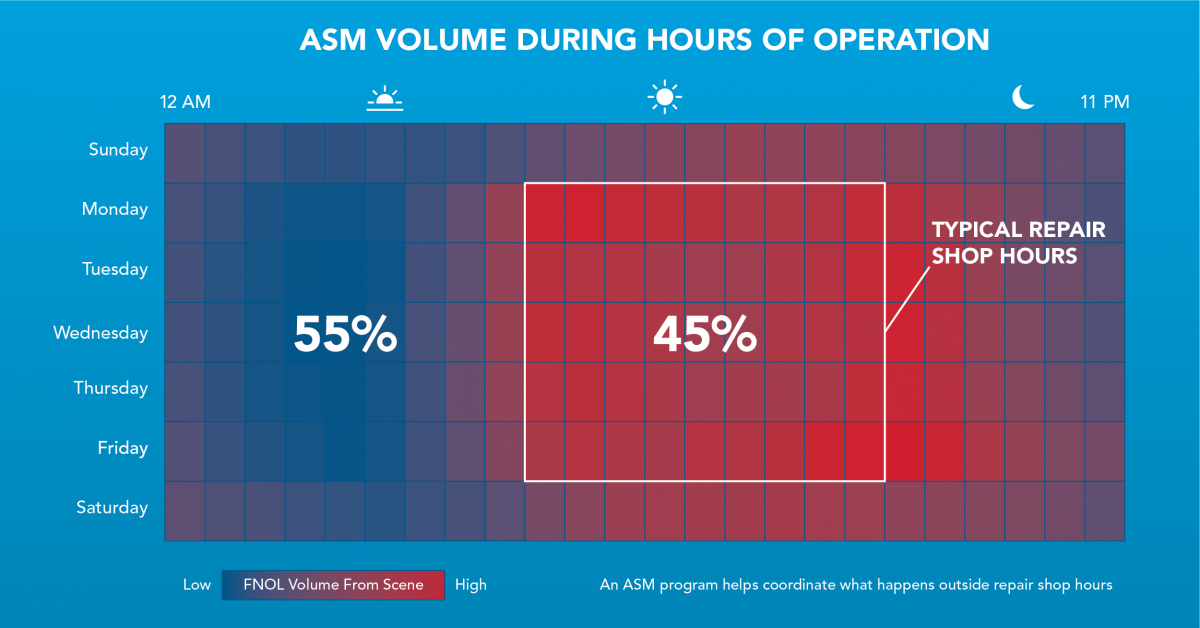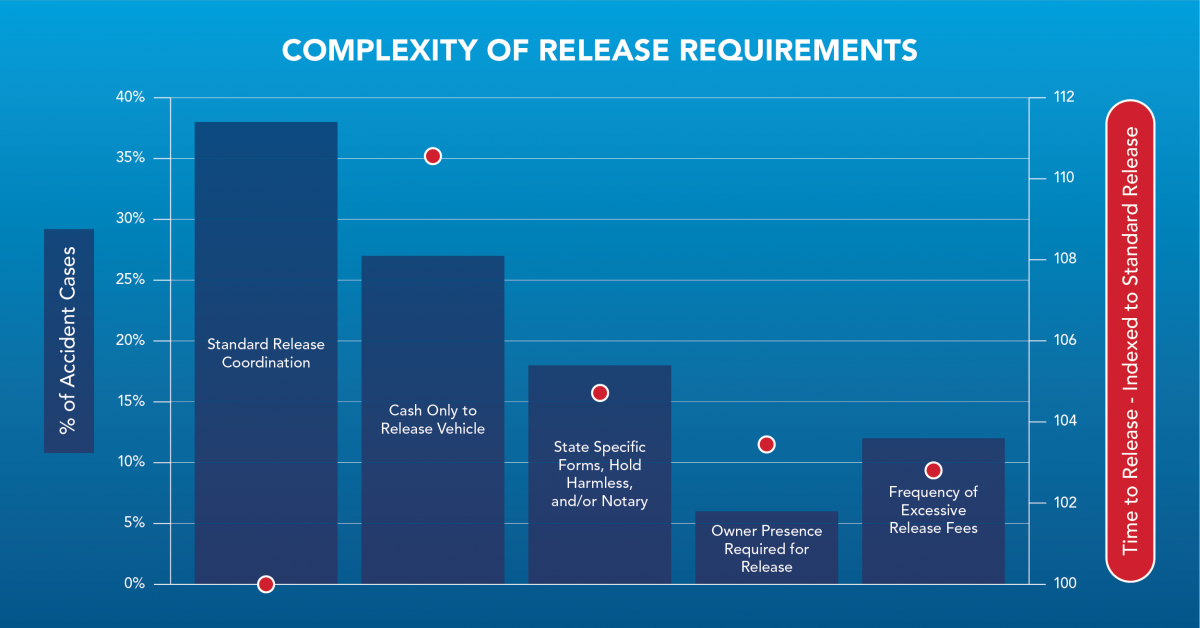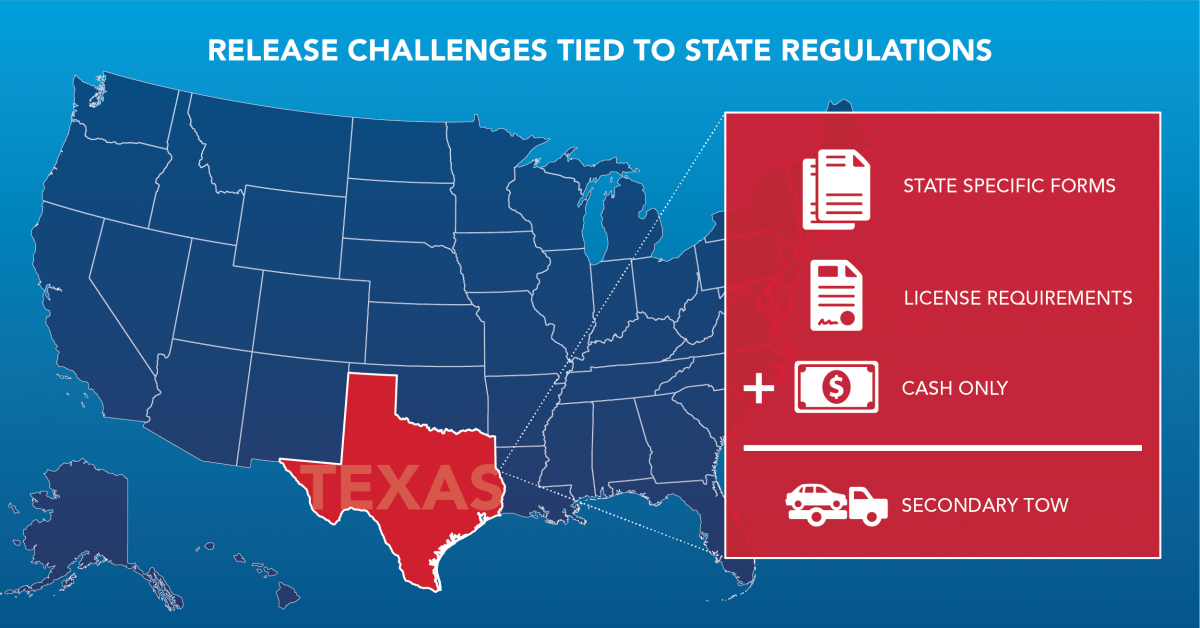Accident scene management is complex. Coordinating a recovery for a non-drivable vehicle requires expertise and consideration. Key factors include ability to obtain accident details and data, equipment and expertise to safely transport vehicle, and measures and controls to ensure vehicle are delivered to preferred location. The challenge in accident scene management is that, for about half of accidents, this process must be completed first from the accident scene and then again from the storage facility.
There are also abundant exceptions and permutations that impact the vast majority of events and drive more complexity. The three primary causes of this complexity are the timing of accidents, the tow-store-tow, and the release process.
Timing of Accidents
Accidents can happen any time of day, anywhere. This often adds logistical challenges, such as service provider coordination, repair shop coordination, and vehicle storage, which can all contribute to added time and costs. The typical repair shop is open from 8 AM – 6 PM, Monday through Friday. The mismatch between this timing and the timing of accident events adds complexity to the process.


Based on Agero’s extensive accident data, we found that about 55% of accidents occur during a time period that would allow for a tow directly from the accident scene to a repair shop. This means that the other 45% of accidents must be removed from the accident scene and secured for some period of time before it can be received by the preferred repair shop. This drives the need for tow-store-tow.
Tow-Store-Tow
Tow-store-tow is complex because it necessitates schedule and dispatch of multiple tows, as well as storage management in between. In nearly 20% of the cases, the vehicle must be stored for a minimum of 24 hours until the repair shop re-opens.
Storage Release
Storage release poses additional challenges and complexity. According to Agero data, only 38% of vehicle releases follow standard release coordination. The remaining 62% poses challenges with regard to payment, paperwork, regulations and negotiations. In each case, these issues must be identified and managed quickly to avoid additional storage costs. Each of these challenges adds time to the release process.


Here are the key issues:
- Cash Only: Cash payment to release from storage. This requires additional coordination with tower and cash handling processes.
- State-specific Forms, Hold Harmless and/or Notary: Various states and municipalities have different regulatory requirements regarding paperwork, validation and approvals to release a vehicle.
- Excessive Release fees: There can be a wide variability in the cost of storage. Accident scene management capability should be able to recognize excessive charges and manage the negotiation.
- Owner's Presence: Based on state and municipal specific regulations, the registered owner may be required to appear at the storage facility as part of the release process.
These challenges tend to be tied to state regulations. Many states have more than one challenging release issue. Texas is a particularly challenging state. In addition to state-specific forms, they also impose certain license requirements for release of the vehicle. To further complicate matters, payment for storage release in Texas is cash only.


The Right Partner Reduces Your Loss Cost from Accidents
The complexity of managing an accident tow requires an accident management expertise, as well as sophisticated technology to manage players, regulations and records. With the right accident management partner, there is significant opportunity to reduce the claims severity and improve the customer experience.
Learn more about Agero's offerings in Accident Management








 Mubbin is Agero’s product and technology lead for the Accident Management business, responsible for delivering innovative solutions that address critical financial levers in the auto claims value chain. He comes from a P&C background, and is passionate about the intersection of process, technology and organizational enablement of the claims experience.
Mubbin is Agero’s product and technology lead for the Accident Management business, responsible for delivering innovative solutions that address critical financial levers in the auto claims value chain. He comes from a P&C background, and is passionate about the intersection of process, technology and organizational enablement of the claims experience.